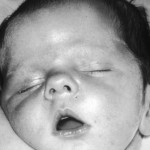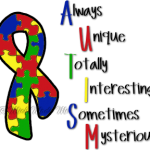 Although Oral facial weakness is commonly documented in myotonic dystrophy in congenital and juvenile forms the consequence and outcomes in Children had not been well documented. A study from 1997 gives additional information on this subject. 56 Children and adolescents from Sweden were survey and evaluated 18 with severe congenital form, 18 with moderate congenital form, 18 with childhood juvenile form and 2 with classical form
Although Oral facial weakness is commonly documented in myotonic dystrophy in congenital and juvenile forms the consequence and outcomes in Children had not been well documented. A study from 1997 gives additional information on this subject. 56 Children and adolescents from Sweden were survey and evaluated 18 with severe congenital form, 18 with moderate congenital form, 18 with childhood juvenile form and 2 with classical form
Here is part of this information:
Ability to understand Speech
This was moderately or severely reduced in 30 or the 56 patients studied
Speech intelligibility reduced 60%
No Speech 9.3%
Muscle Function in Speech
Moderate or severe reduction in strength
Lip motility 76%
Tongue Motility 52.2%
Lip Force 69.2%
These issues cause probelms with production of bilabial and dental constants. Bilabial constants use both lips. Dental constants are ones that use the tongue against the roof of the mouth.
.
Eating and drinking Difficulties
Difficulty in getting food off spoon with lips 20.4%
Takes long time to swallow bites of food 20.4%
Food and Liquids leak out of corners of mouth 16.7%
Food gets stuck in gums 14.8%
Swallows large pieces of Food w/o chewing 9.3%
Chokes on food 7.4%
Coughs when receiving liquids 7.4%
Presses tongue forward when swallowing 7.4%
Food or liquid go up through nose 5.6%
Facial Expression
Mildly affected 9 Children
Moderately affected 25 children
Severely affected 25 children
49 had an open mouth at rest
37 had wide open mouth at rest
Speech
14 Mildly reduced speech
21 Moderately reduced Speech
9 severely reduced speech
5 No Speech <10 words
Congenital children had more severe reduced intelligibility
Click below for the full scientific study
OralFacial Dysfunction in Children with Myotonic Dystrophy
Developmental Medicine and Child Neurology 2007, 49 18-22
Children with DM1 should therefore be referred to a speech and language pathologist early to get support for optimal development of feeding and communications.
 Dr. Puymirat Quebec, Canada
Dr. Puymirat Quebec, Canada




